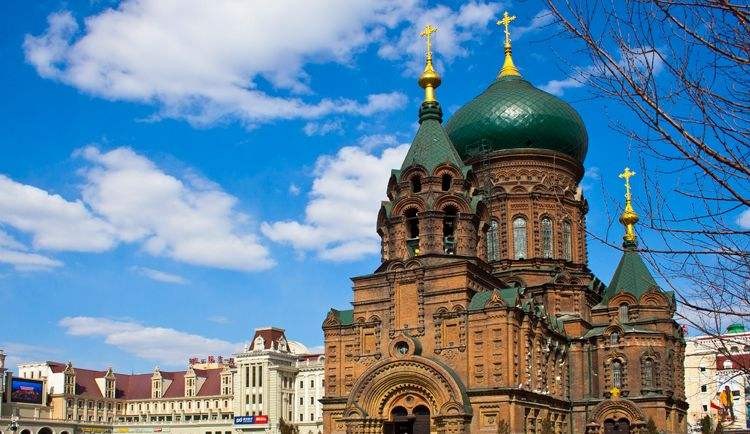Heralded as the Ice City, Harbin is a beautiful city in northeastern China. A Byzantine-style building sits on Toulong Street, the eastern side of Zhongyang Pedestrian Street, in the central district of Daoli. It is the famous St. Sophia Cathedral. The Orthodox church has become a landmark in this city.
Eastern Orthodoxy from Russia was introduced into China in the 17th century. In 1665, the Russian army invaded the fort of Albazin that lies on the left bank of the Amur River, and built castles. A military chaplain built the Church of the Resurrection of Christ in Albazin and in 1671, he founded a monastery on a local mountain. In 1700, Peter the Great issued a handwritten directive sending the Russian Orthodox Church missionaries to preach in Beijing. In 1715, with the consent of Emperor Kangxi, Russian Orthodox missionaries were officially sent to be stationed in China's capital of Beijing. Soon later a general assembly of the Orthodox Church was set up in Beijing.
Around 1900, Orthodox churches were built in mainland China including Harbin, Shenyang, Lüshun, Shanghai, Tianjin, Qingdao, Xinjiang, and Weihui. It is within this historical context that Harbin established her iconic landmark.
St. Sophia Orthodox Cathedral was built in March 1907. At first, it was used as the chapel of the Russian No. 4 Army Division and was composed of a wooden framework. Four years later, a brick wall extension was added outside the wooden wall. With the increase of the number of Russians in Harbin, especially White Russian refugees rushing into the city, Russians in the city numbered 100,000 in the 1920s. To satisfy their religious demands, the church renovated its building in September 1923. After nine years' construction, the new church was completed with a height of 53.3 meters (174.8 ft) and a floor area of 721 square meters (0.18 acres). Accommodating more than 2,000 people, it was called the "Greatest Orthodox Church in the Far East".
Magnificent and exquisite, the cathedral has a big onion dome which is in command of four lower tent roofs in different sizes in the four directions. There are stairs linking the four storeys and there are four doors. At the top of the front door lies the bell tower. A clock made of copper cast has seven notes, rung by a trained bellman with his hands and feet. The main structure is laid out like a Greek cross with the main hall topped with a huge green-tipped dome. It is a classic example of Russian building in China.
After 1950, the Orthodox church transferred its estate to the Chinese government due to the special ties between the Soviet Union and China. It was closed in 1958 and was partially damaged during the Cultural Revolution. It was then used as the storehouse of a department store for a long time, shielded all around by new buildings, so as not to readily reveal its real purpose and activities to the public. It was only until 1997 that the surrounding buildings were removed. The local government repaired the cathedral, changed it into a museum of architecture and listed it as a "Major Historical and Cultural Site Protected at the National Level".
- Translated by Karen Luo












